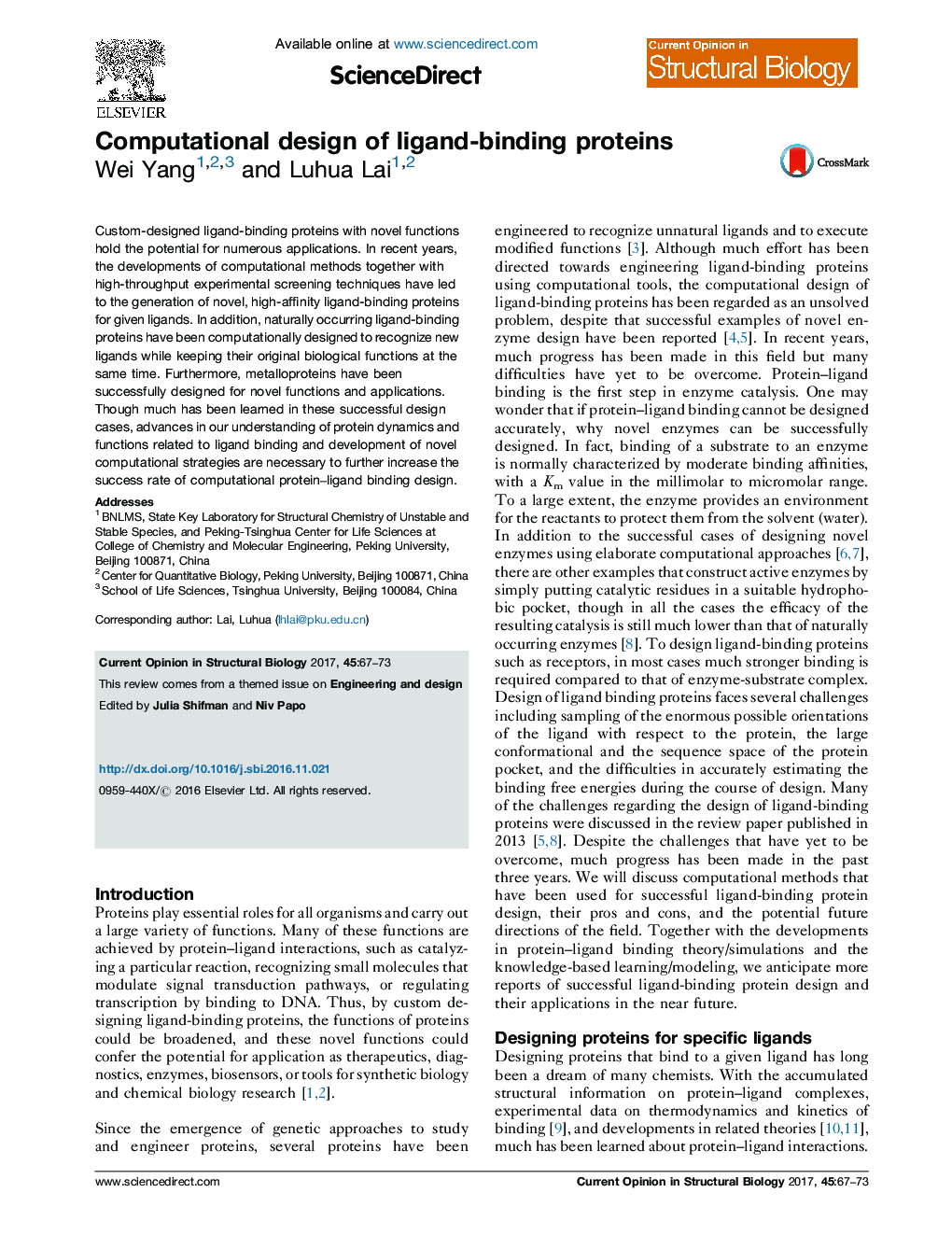| Article ID | Journal | Published Year | Pages | File Type |
|---|---|---|---|---|
| 5510827 | Current Opinion in Structural Biology | 2017 | 7 Pages |
Abstract
Custom-designed ligand-binding proteins with novel functions hold the potential for numerous applications. In recent years, the developments of computational methods together with high-throughput experimental screening techniques have led to the generation of novel, high-affinity ligand-binding proteins for given ligands. In addition, naturally occurring ligand-binding proteins have been computationally designed to recognize new ligands while keeping their original biological functions at the same time. Furthermore, metalloproteins have been successfully designed for novel functions and applications. Though much has been learned in these successful design cases, advances in our understanding of protein dynamics and functions related to ligand binding and development of novel computational strategies are necessary to further increase the success rate of computational protein-ligand binding design.
Related Topics
Life Sciences
Biochemistry, Genetics and Molecular Biology
Biochemistry
Authors
Wei Yang, Luhua Lai,
